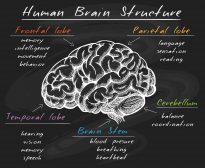
Loose associations
n. [luːs əˌsəʊsɪˈeɪʃən;]
Definition: a communication pattern disorder characterized by loose or odd connections between ideas
Table of Contents
Definition of Loose Associations
When asked to define loose associations in psychology one can tell that it is a formal thought disorder characterized by a lack of association between different ideas resulting in disorganized thinking. A person with loosened associations speaks and writes sentences that are difficult to understand.
People with this disorder face extreme difficulty in communication and they are often unaware of their own condition. So, If you think you know someone who is having trouble in establishing effective communication, you can help them with getting a proper psychiatric evaluation.
In psychology, thought disorders are classified into four broad types based on the stream of thought, form/process of thought, possession of thought, and content of thought. See the figure showing the classification of thought disorders.

What are loose associations?
Loose associations are one of the types of formal thought disorder. Form of thought refers to the logical connection between different ideas and is responsible for a structured and meaningful speech. When the connections between different ideas are broken, the output is disorganized and meaningless. Loose associations are often called out by other names such as derailment, Knight’s move thinking, asyndesis, entgleisen.
Loose associations in schizophrenia and other psychotic illnesses are frequently observed and are quite distinctive. However, the latest research shows evidence that certain non-psychotic illnesses, as well as normal controls, can also have associative looseness. Thought disorders, in general, occur from time to time in our lives but most of such incidences are transient in nature and do not interfere in establishing effective communication.
So, what exactly happens in a person with loose associations?
As previously discussed, there is a lack of associations between different ideas coming to the mind of a person with this disorder. The written and spoken language of such persons consists of sentences that literally make no sense to other people. The sentences lack an overall goal-directedness. A person with this disorder frequently jumps to different ideas within the same sentence.
There is a complex interplay of genetics and environmental factors that may lead to the development of loose associations. The exact mechanism of loosening of association remains unknown to mankind.

Loose associations are formal thought disorders characterized by a lack of connection between different ideas resulting in disorganized communication. A person having this disorder is unable to express a set of well-structured, logically related ideas. In effect, the person expresses a rather diffuse, vague, confusing, and without clear logic and connections between one idea to the next.
History
Over the course of time, different psychologists have used various terminologies to refer to the disturbance of thought that today we know as derailment. A summary of different terminologies is given in the table below.
Table 1: It shows the various terminologies coined by different psychologists over the course of time | ||
|---|---|---|
| Year | Terminology | Psychologist |
| 1930 | Entgleisen | Carl Schneider |
| 1938 | Asyndesis | N. Cameron |
| 1950 | Loosening of association | A. Bleuler |
| 1957 | Knight’s move thinking | Peter McKeller |
| 1959 | Derailment | Kurt Schneider |
Examples of Loose Associations
We can better understand the loose associations thought process with the help of examples. A person with loose associations speaks sentences like these.
- “I like to dance, all people have hands.”
- “I like to play games because the river is flowing down a mountain.”
- “The weather is sunny, the monkey has a long tail.”
You can easily notice that in each sentence there are different components having an individual meaning. However, the different components do not logically connect with each other. Hence, the overall sentences don’t really make any sense.
Therapy
The diagnosis of loose associations is made by a psychiatrist after a detailed mental status evaluation of a patient. Loose associations are not a disease by itself, rather it is a manifestation of an underlying mental disorder.
It can sometimes be an important clue to the psychiatrist in making a diagnosis of a psychotic disorder such as schizophrenia. Other thought disorders might give a clue towards the diagnosis of different diseases.
For example:
- Flight of ideas – flight of ideas thought process is characterized by a continuous rapid flow of speech. A person with the flight of ideas jumps from topic to topic too quickly and this feature is particularly useful in making a diagnosis of Mania.
- Thought blocking – It is characterized by sudden stoppage in the flow of ideas. A person with this disorder goes into extreme silence before completing a sentence. It may be indicative of Anxiety or Schizophrenia.
- Tangentiality – A person with tangential thinking drifts away from the topic of discussion and never comes back to it again. It can be indicative of schizophrenia, dementia, or delirium.
The treatments are usually not targeted towards thought process disorder rather they target the underlying disorder. As the underlying disorder is treated the thought disorders generally improve. The most common forms of treatments include counseling, psychotherapy, and medications that restore the lost balance of neurotransmitters in the brain.
Please note that this info is for general information only and should not be used to replace professional medical care or advice. Best to contact a health care provider for thorough and precise information on associative looseness and loose associations.
Try to answer the quiz below to check what you have learned so far about loose associations.
Further Reading
Tutorials:
- Psychiatry & Mental Disorders
- Consciousness and Behavior
- Types and Causes of Brain Damage
- The Conscious & Unconscious Nervous System
- IQ, Creativity and Learning
Articles:
- Hallucination – Are we the only ones “seeing” things or animals hallucinate, too?
- The biology of how the brain forgets
- Dead Man Walking
References
- Davies, G. (2004). Symptoms in the Mind. An Introduction to Descriptive Psychopathology (3rd edn). British Journal of Psychiatry, 184, 461 – 461.
- Thompson, T., Mathias, P., & Lyttle, J. (1994). Lyttle’s mental health and disorder. London … [et al.: Baillie��re Tindall.
- Spillane, R., & Martin, J. (2005). Personality and performance: Foundations for managerial psychology. Sydney: Unsw Press.
- Sadock, B. J., Sadock, V. A., Ruiz, P., & Kaplan, H. I. (2017). Kaplan and Sadock’s comprehensive textbook of psychiatry (10th ed.). Wolters Kluwer.
©BiologyOnline.com. Content provided and moderated by Biology Online Editors.








